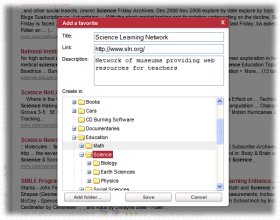|
Education
Web
Viewing 1-2 of 2 total results
evidence is required to evaluate hypotheses and explanations; c) comparing different scientific explanations for a set of observations about the Earth; d) explaining that observation and logic are essential for reaching a conclusion; and e) evaluating evidence for scientific the...
1
0
evidence is required to evaluate hypotheses and explanations; c) comparing different scientific explanations for a set of observations about the Earth; d) explaining that observation and logic are essential for reaching a conclusion; and e) evaluating evidence for scientific theories. ES.3 The student will investigate and understand how to read and interpret maps, globes, models, charts, and imagery. Key concepts include a) maps (bathymetric, geologic, topographic, and weather) and star charts; b) imagery
31
0
http://www.doe.virginia.gov/VDOE/Superintendent/Sols/sciencesol.pdf#page=31
www.doe.virginia.gov/VDOE/Superintendent/Sols/sciencesol.pdf#page=31
evidence is required to evaluate hypotheses and explanations; c) comparing different scientific explanations <span class="highlight">for</span> a set of observations about the Earth; d) explaining that observation and logic are essential <span class="highlight">for</span> reaching a conclusion; and e) evaluating evidence <span class="highlight">for</span> scientific theories. ES.3 The student will investigate and understand how to read and interpret <span class="highlight">maps</span>, globes, models, charts, and imagery. Key concepts include a) <span class="highlight">maps</span> (bathymetric, geologic, <span class="highlight">topographic</span>, and weather) and star charts; b) imagery
examine the role of water on the Earth. • Surface Examples: waves, glaciers, rivers • Underground Example: aquifers • Atmosphere Examples: precipitation, humidity (Comprehension) 6.E.1.3. Students are able to explain processes involved in the formation of the Earth’s structure....
1
0
examine the role of water on the Earth. • Surface Examples: waves, glaciers, rivers • Underground Example: aquifers • Atmosphere Examples: precipitation, humidity (Comprehension) 6.E.1.3. Students are able to explain processes involved in the formation of the Earth’s structure. Examples: plate tectonics, volcanoes, earthquakes #0;9 Interpret topographic and digital imagery or remotely sensed data to identify surface features. Examples: local, global, regional #0;9 Explain the formation of
99
0
http://doe.sd.gov/contentstandards/science/docs/2005/EarthSpace/South%20Dakota%20Science%202005.pdf#page=99
doe.sd.gov/contentstandards/science/docs/2005/EarthSpace/South%20Dakota%2...
examine the role of water on the Earth. • Surface Examples: waves, glaciers, rivers • Underground Example: aquifers • Atmosphere Examples: precipitation, humidity (Comprehension) 6.E.1.3. Students are able to explain processes involved in the formation of the Earth’s structure. Examples: plate tectonics, volcanoes, earthquakes #0;9 Interpret <span class="highlight">topographic</span> and <span class="highlight">digital</span> imagery or remotely sensed data to identify surface features. Examples: local, global, regional #0;9 Explain the formation of
|
